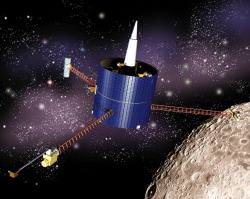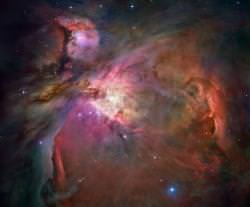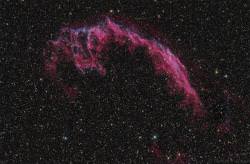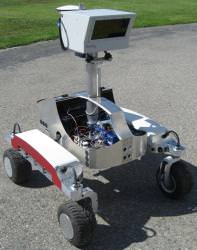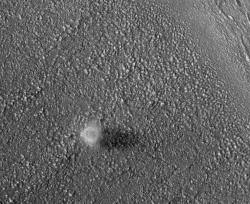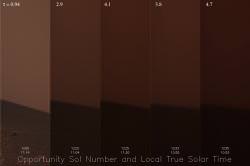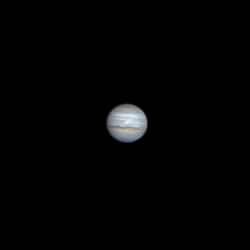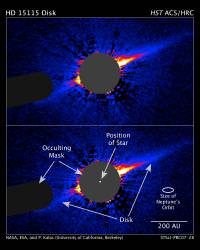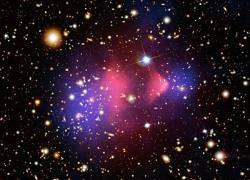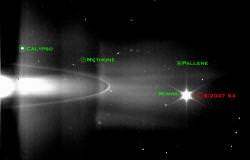Monday, July 23 – Tonight let’s continue our look at the lunar poles by returning to previous study crater Plato. North of Plato you will see a long horizontal area with a gray floor – Mare Frigoris. North of it you will note a double crater. This elongated diamond-shape is Goldschmidt and the crater which cuts across its western border is Anaxagoras. The lunar north pole isn’t far from Goldschmidt, and since Anaxagoras is just about one degree outside of the Moon’s theoretical “arctic circle,â€? the lunar sun will never go high enough to clear the southernmost rim. As proposed with Saturday’s study, this permanent darkness must mean there is ice! For that very reason, NASA’s Lunar Prospector probe was sent there to explore. Did it find what it was looking for? Answer – Yes!
The probe discovered vast quantities of cometary ice which have hidden inside the crater’s depths untouched for millions of years. If this sounds rather boring to you, then realize that this type of resource will greatly improve the prospects of establishing a manned base on the lunar surface!
On March 5, 1998, NASA announced that Lunar Prospector’s neutron spectrometer data showed that water ice had been discovered at both lunar poles. The first results showed the ice was mixed in with lunar regolith (soil, rocks and dust), but long term data confirmed near pure pockets hidden beneath about 40 cm of surface material – with the results being strongest in the northern polar region. It is estimated there may be as much as 6 trillion kg (6.6 billion tons) of this valuable resource! If this still doesn’t get your motor running, then realize that without it, we could never establish a manned lunar base because of the tremendous expense involved in transporting our most basic human need – water.
The presence of lunar water could also mean a source of oxygen, another vital material we need to survive! And for returning home or voyaging further, these same deposits could provide hydrogen which could be used as rocket fuel. So as you view Anaxagoras tonight, realize that you may be viewing one of mankind’s future “homesâ€? on a distant world!
Tuesday, July 24 – Tonight let’s take an entirely different view of the Moon as we do a little “mountain climbing!” The most outstanding feature on the Moon will be the emerging Copernicus, but since we’ve delved into the deepest areas of the lunar surface, why not climb to some of its peaks?
Using Copernicus as our guide, to the north and northwest of this ancient crater lie the Carpathian Mountains, ringing the southern edge of Mare Imbrium. As you can see, they begin well east of the terminator, but look into the shadow! Extending some 40 kilometers beyond the line of daylight, you will continue to see bright peaks – some of which reach 2072 meters high! When the area is fully revealed tomorrow, you will see the Carpathian Mountains eventually disappear into the lava flow that once formed them. Continuing onward to Plato, which sits on the northern shore of Imbrium, we will look for the singular peak of Pico. It is between Plato and Mons Pico that you will find the scattered peaks of the Teneriffe Mountains. It is possible that these are the remnants of much taller summits of a once stronger range, but only around 1890 meters still survives above the surface.
Time to power up! To the west of the Teneriffes, and very near the terminator, you will see a narrow series of hills cutting through the region west-southwest of Plato. This is known as the Straight Range – Montes Recti – and some of its peaks reach up to 2072 meters. Although this doesn’t sound particularly impressive, that’s over twice as tall as the Vosges Mountains in central Europe and on the average very comparable to the Appalachian Mountains in the eastern United States. Not bad!
Wednesday, July 25 – Today in 1971, Apollo 15 was launched on its way towards the Moon, and we’ll continue our lunar mountain climbing expedition and look at the “big picture” on the lunar surface. Tonight all of Mare Imbrium is bathed in sunlight and we can truly see its shape. Appearing as a featureless ellipse bordered by mountain ranges, let’s identify them again. Starting at Plato and moving east to south to west you will find the Alps, the Caucasus, and the Apennines, where Apollo 15 landed at the western end of Palus Putredinus. Next come the Carpathians Mountains just north of Copernicus. Look at the form closely… Doesn’t this appear that perhaps once upon a time an enormous impact created the entire area? The Imbrium impact… Compare it to the younger Sinus Iridium. Ringed by the Juras Mountains, it may have also been formed by a much later and very similar impact.
And you thought they were just mountains…
Tonight let’s have a look with our eyes first at Delta Ophiuchi. Known as Yed Prior (“The Hand”), look for its optical double Epsilon to the southeast: Yed Posterior. Now have a look in binoculars or a telescope at absolute minimum power for another undiscovered gem…
Delta Ophiuchi is 170 light-years from us, while Epsilon is 108 – but look at the magnificent field they share. Stars of every spectral type are in an area of sky which could easily be covered by a small coin held at arm’s length. Enjoy this fantastic field – from the hot, blue youngsters to the old red giants!
Thursday, July 26 – Tonight let’s head north of Sinus Iridum, across Mare Frigoris and northeast of the punctuation of Harpalus for a grand old crater – J. Herschel. Although it looks small because it is seen on the curve, this wonderful old walled plain named for John Herschel contains some very tiny details. Its southeastern rim forms the edge of Mare Frigoris and the small crater (24 km) Horrebow dots its southwest edge. The crater walls are so eroded with time that not much remains of the original structure. Look for many very small impact craters which dot J. Herschel’s uneven basin and exterior edges. Power up! If you can spot the small central crater C, you are resolving a feature only 12 kilometers wide, from some 385,000 kilometers away!
While we’re out, let’s have a look at another astounding system called 36 Ophiuchi, located about a thumb’s width southeast of Theta. Situated in space less than 20 light-years from Earth, even small telescopes can split this pair of 5th magnitude K type giants very similar to our own Sun, and larger telescopes can also pick up the C component as well. 36 Ophiuchi B is also known as system 544…because it has what could very likely be a planet in a habitable zone!
Be sure to mark your lists with both of your observations tonight, because J. Herschel is a lunar club challenge and 36 Ophiuchi is on many doubles challenge lists.
Friday, July 27 – Tonight let’s start our lunar observations with a feature that’s a bit less obvious – crater contrasts. The Oceanus Procellarum is the vast, grey “sea” that encompasses most of the northwestern portion of the Moon. On the terminator to its southwest edge, (and almost due west geographically) you will see two craters of near identical size and depth, but not identical lighting.
The southernmost is 46 kilometer wide Billy – one of the darkest-floored areas on the Moon. Named for French mathematician and astronomer Jacques de Billy, it will appear to have a bright ring (the crater rim) around it, but the interior is as featureless as a mare! To the north is 45 kilometer wide Hansteen – note how much brighter and more detailed it is. This far more featured area was named for Dutch geophysicist Christopher Hansteen, and if you power up you’ll see the 30 kilometer wide base of Mons Hansteen between them, as well as a 25 kilometer-long rima to the west. It’s easy to see that Billy was once filled with smooth lava flow, while counterpart Hansteen evolved much differently! Be sure to mark your notes on this lunar challenge.
Now that we’ve looked at contrasting craters, let’s have a look at a beautifully contrasting pair of stars – Zeta 1 and 2 Scorpii. You’ll find them a little less than a handspan south-southeast of Antares and at the western corner of the J of the constellation’s shape.
Although the two Zetas aren’t a true physical pair, they are nonetheless interesting. The easternmost, orange sub-giant Zeta 2 appears far brighter for a reason… It’s much closer at only 155 light-years away. But, focus your attention on western Zeta 1. It’s a blue supergiant that’s around 5700 light-years away and shines with the light of 100,000 suns and exceeds even Rigel in sheer power! The colorful pair is easily visible as two separate stars to the unaided eye, but a real delight in binoculars or a low power telescope field. Check them out tonight!
Saturday, July 28 – Tonight as the skies darken, look for Jupiter to appear first about 5 degrees north of the Moon – with Antares around a half degree north. Antares could be a visible occultation, so be sure to check IOTA information!
While we’re looking Selene’s way, see if you can spot crater Grimaldi on the western edge without any aid… Then grab binoculars or telescope and let’s have a look!
Named for Italian physicist and astronomer Francesco Grimaldi, this great old crater is one of the few which actually resembles a mare. It spans 222 kilometers from east to west and 430 kilometers from north to south. Along its southeastern flank, look for a 230 kilometer-long rima which extends its way to the double ring of Sirsalis. Grimaldi is a Class V mountain-walled plain whose floor is one of the darkest areas of the Moon, reflecting only 6% of the light. Look carefully at its walls… You’ll find the northern area very eroded, while both foothills and mountains edge it to the east and west. Be sure to mark your lunar challenge list as having spotted the great Grimaldi!
Now grab a comfortable seat because the Delta Aquarid meteor shower reaches its peak tonight. It is not considered a prolific shower, and the average fall rate is about 25 per hour – but who wouldn’t want to take a chance on observing a meteor about every 4 to 5 minutes? These travelers are considered to be quite slow, with speeds around 24 kilometers per second and are known to leave yellow trails. One of the most endearing qualities of this annual shower is its broad stream of around 20 days before and 20 days after peak. This will allow it to continue for at least another week and overlap the beginning stages of the famous Perseids.
The Delta Aquarid stream is a complicated one, and a mystery not quite yet solved. It is possible that gravity split the stream from a single comet into two parts, and each may very well be a separate stream. One thing we know for certain is they will seem to emanate from the area around Capricornus and Aquarius, so you will have best luck facing southeast and getting away from city lights. Although the Moon will interfere, just relax and enjoy a warm summer night. It’s time to catch a “falling star!”
Sunday, July 29 – Tonight our Moon stands poised on the edge of becoming Full in a matter of hours. If we could see it from space, we would know that it is readying itself to pass either just north or just south of the cone of shadow projected by Earth. Take the time to study the limbs of the Moon for the effects of libration. Follow Tycho’s bright ray towards the southwest and see if you can spot the Doerfel Mountains as tiny bumps on the limb edge. While they might not appear to be much, they are three times higher than Mount Everest!
Now head about a palm’s width east of Friday night’s study star Zeta Scorpii for lovely Theta. Named Sargas, this 1.8 magnitude star resides around 650 light-years distant in a very impressive field of stars for binoculars or a small telescope. While all of these are only optical companions, the field itself is worth a look – and worth remembering for the future.
About three fingerwidths north is true double Lambda Scorpii, also known as Shaula (The Sting). As the brightest known star in its class, 1.6 magnitude Lambda is a spectroscopic binary which is also a variable of the Beta Canis Majoris type, changing ever so slightly in little more than 5 hours. Although we can’t see the companion star, nearby is yet another that will make learning this starhop “marker” worth your time.

